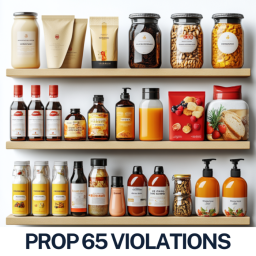
Jamba’s Expansion: What Business Owners Can Learn from Its Move
Jamba, best known for its smoothie chain, is expanding far beyond the food court. In a bold retail move, the brand has announced a lineup of ready-to-go grocery products including drink mixes, smoothie kits, frozen novelties, and snack bars. Partnering with Jel Sert for powdered drink mixes and Revive Superfoods for smoothie kits, Jamba is entering consumers’ homes in a way that shifts its identity from QSR brand to omnichannel CPG player.
This strategy offers an invaluable case study for food and beverage companies—and their legal counsel—navigating brand extensions, licensing deals, and direct-to-consumer (DTC) models. From partnership structures to liability allocation, the business and legal implications of this kind of expansion require careful planning.
Licensing vs. Direct-to-Consumer: Navigating Liability and Partnership Contracts
When a brand expands into new distribution channels, it must decide how to structure its partnerships. Licensing agreements and direct-to-consumer collaborations each present distinct legal implications, especially in areas like liability, intellectual property, and revenue allocation.
What Is the Difference Between Licensing and DTC Partnerships?
Choosing between licensing and DTC starts with a fundamental question: how much control do you want—and how much risk can you tolerate? Jamba’s collaboration with Jel Sert is a classic licensing model. Jel Sert handles manufacturing and distribution while Jamba licenses its brand and retains approval rights. By contrast, the Revive Superfoods partnership involves more hands-on collaboration: shared branding, co-developed recipes, and DTC fulfillment, where both parties have operational skin in the game.
The distinction isn’t just semantic. It determines who is responsible for everything from supply chain errors to customer service mishaps:
- Licensing involves limited brand involvement in day-to-day operations but greater scalability.
- DTC partnerships often require active brand participation in operations, marketing, and customer service.
- Licensing is typically easier to unwind than DTC joint ventures.
- DTC allows more control over customer data and experience.
- Each model offers different tax, regulatory, and logistical implications.
How to Structure Licensing Agreements for Brand Protection
Licensing can be a low-risk way to grow your business if the agreement is carefully drafted. The goal is to give partners enough flexibility to sell effectively, while preserving the brand’s integrity and minimizing legal exposure. Contracts should anticipate long-term growth, but also offer a clean exit if the relationship underperforms. For example, Jamba likely retained strong approval and audit rights in its Jel Sert deal to preserve product quality.
Key elements include:
- Clearly define the scope of rights—including territory, product types, and sales channels.
- Include performance benchmarks and options to terminate or renegotiate if targets are missed.
- Require approval rights over marketing, packaging, and any brand-related materials.
Direct-to-Consumer Partnerships: Risks and Rewards
Unlike licensing, DTC partnerships require brands to take a more hands-on approach. While this offers benefits in consumer engagement and branding, it also brings exposure to operational and legal risks.
- Joint responsibility for product development, marketing, and fulfillment.
- Increased exposure to customer complaints and regulatory compliance.
- Revenue-sharing models require close coordination on accounting.
- Dispute resolution provisions are essential to avoid operational standstills.
- Exit planning should include contingency plans for performance or reputation issues.
DTC collaborations work best when both parties align operationally and culturally. Strong communication and clear documentation are critical to long-term success.
Which Model Is Best for Your Business?
Choosing between licensing and DTC depends on your business model, resources, and growth goals. Many successful brands start with one and shift to the other—or blend the two models based on market and product category.
- Consider licensing when you want to scale fast with minimal infrastructure.
- Use DTC if your brand has loyal followers and you want more control.
- A hybrid approach can allow for DTC pilots and licensed mass-market products.
Ultimately, your expansion strategy should reflect your risk tolerance, operational capabilities, and brand maturity.
E-Commerce Fulfillment and Liability: Selling Through Amazon & Partners
Today’s brands often rely on online marketplaces like Amazon, Walmart, or Instacart to reach customers—but selling through these platforms brings legal and operational complexity. As Jamba explores e-commerce via partners like Revive Superfoods and online availability of their Jel Sert drink mixes, it raises critical questions about fulfillment, liability, and brand protection.
Platform Agreements: What Are You Really Signing?
Before selling through Amazon or another third-party platform, it’s crucial to understand the platform’s contract terms. These agreements often include provisions that limit their liability and shift significant responsibilities to the brand or seller.
- Indemnity clauses that require you to defend the platform against consumer claims.
- Restrictions on pricing, advertising, and sales terms.
- Mandatory arbitration or dispute resolution outside of your jurisdiction.
- Platform returns policies that override your company’s stated terms.
- Limitations on data ownership, even if you generate the customer.
These agreements should be reviewed with legal counsel to ensure your brand is not overly exposed.
Product Liability and Consumer Claims in the Digital Space
E-commerce blurs the lines of responsibility. Who is liable if a product is defective, mislabeled, or causes harm?
- If you’re the brand owner, you’re often seen as the responsible party, even if a co-packer ships the product.
- Platforms like Amazon may shield themselves from liability unless you’re part of specific programs (e.g., Amazon Brand Registry).
- Third-party logistics (3PL) providers may not cover damage or spoilage claims without clear contractual terms.
- State-specific consumer protection laws apply, especially in California and New York.
Managing this risk requires clear agreements with every party in your supply chain and robust insurance coverage.
Ensuring Brand Control and IP Protection
Selling through third-party channels can dilute brand identity if not carefully managed. Unauthorized resellers, inconsistent product packaging, and gray market imports are common issues.
To maintain control:
- Register trademarks and enroll in brand protection programs (like Amazon Brand Registry).
- Use MAP (Minimum Advertised Price) policies to protect pricing integrity.
- Include IP enforcement clauses in agreements with co-packers, distributors, and fulfillment centers.
- Monitor for counterfeit or unauthorized sellers and take swift action.
E-commerce growth must be paired with active brand monitoring and enforcement.
Distribution Rights and Fulfillment Partnerships
Finally, whether you’re licensing or partnering for DTC e-commerce, clarify the terms of who is allowed to sell and where.
- Grant exclusive or non-exclusive rights with clear territorial boundaries.
- Specify inventory ownership and who is responsible for fulfillment errors.
- Build in performance milestones to evaluate partner success.
- Require compliance with platform rules and timely reporting.
A well-structured agreement supports growth while protecting your operational flexibility.
Final Thoughts: Key Takeaways for Growing CPG Brands
Jamba’s latest expansion is more than a branding success—it’s a masterclass in strategic partnerships. Whether through licensing or direct-to-consumer deals, companies must navigate complex legal terrain to protect their brand, allocate risk, and structure agreements that drive growth.
Here are the core insights from this article:
- Licensing offers scalability with less operational burden, but requires strong contract controls to preserve brand value.
- DTC models provide better consumer data and control, but introduce operational and liability risks that must be shared and documented.
- E-commerce success hinges on platform agreement review, brand protection, and risk allocation across logistics and fulfillment.
- Legal strategy must evolve with your distribution model, ensuring agreements reflect your operational realities and long-term goals.
If you’re considering an expansion strategy similar to Jamba’s—whether through licensing or direct e-commerce channels—Juris Law Group can help structure your partnerships, protect your brand, and mitigate risk across all distribution channels.
If you’re looking to grow your business and want strategic guidance on licensing, DTC models, or e-commerce expansion, we invite you to contact Juris Law Group, P.C. Our team can help you develop a custom approach that aligns with your goals, protects your brand, and accelerates growth.













